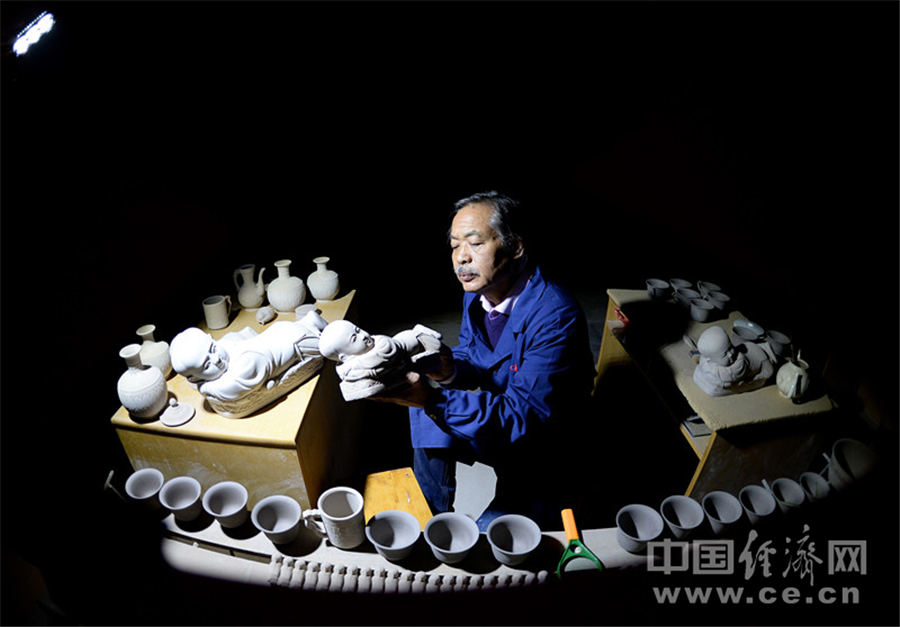 |
|
Chinese artisan and craftsman Chen Wenzeng is in high demand for the quality of his work. [Photo/www.ce.cn] |
The Ding porcelain firing technique, which had disappeared for 800 years, is now back in use. Ding porcelain is one of the pillar industries of Quyang county, Hebei province.
Ding Kiln, Ru kiln, Jun Kiln, Guan Kiln and Ge Kiln are renowned as the "Five Kilns" of the Song dynasty. The Ding Kiln began in the Tang Dynasty, flourished in the Song Dynasty and vanished in the Yuan Dynasty. Ding porcelain had the reputation of being "thin as paper, white as jade". Ding porcelain pieces have been collected in the world's most famous museums.
Research has been conducted on the Ding porcelain firing technique since the 1970s. After 30 years of unremitting effort and thousands of experiments, craftsmen have finally rediscovered the firing technique of Ding porcelain. In 2008, "Ding porcelain firing technique" was listed by China as an item of national intangible cultural heritage. The Ding Kiln has produced a set of Ding porcelain that have been sold in Canada, the UK, Japan and the US.
"Developing the firing technique was just a beginning," says artisan Chen Wenzeng. "Making the Ding porcelain culture well-known is the final goal." He has been teaching the Ding porcelain firing technique in an attempt to promote the development of the Ding porcelain industry.